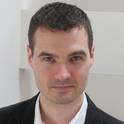
Presentation
Evaluation and Impact of a Required Computational Thinking Course for Architecture Students
2017 ACM SIGCSE Technical Symposium on Computer Science Education
(2017)
Abstract
Non-major education continues to be a growing area of study in computer science education research. This paper focuses on architects as an audience and the teaching of computer science by architects, who successfully applied computer science education research. The author describes the structure and development of a required computational thinking course with an average yearly enrollment of 69 students and how it applied best practices from Media Computation to improve student outcomes and engagement. A four-year impact study found that a flipped classroom model combined with peer learning methods was superior to traditional lectures and labs for improving student performance and reducing attrition. Comparisons of pre- and post-class surveys revealed an improved perception of computing and an increased interest in the subject -- a positive outcome for a required introductory course. The author also studied the course's long-term effects. Three years after taking the course, a majority of students felt they retained what they learned and that learning computational thinking helped them to learn new software and perform better in advanced computing courses. By taking into account how architects learn and revising in response to assessments, we believe our course structure and teaching methodology demonstrates an effective case for applying computer science education research within an architectural curriculum.
Disciplines
Publication Date
Spring March 8, 2017
Location
Seattle, WA
DOI
10.1145/3017680.3017750
Citation Information
Nick Senske. "Evaluation and Impact of a Required Computational Thinking Course for Architecture Students" 2017 ACM SIGCSE Technical Symposium on Computer Science Education (2017) Available at: http://works.bepress.com/nicholas-senske/19/
